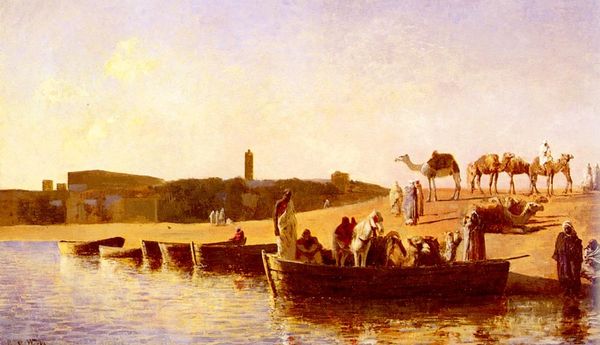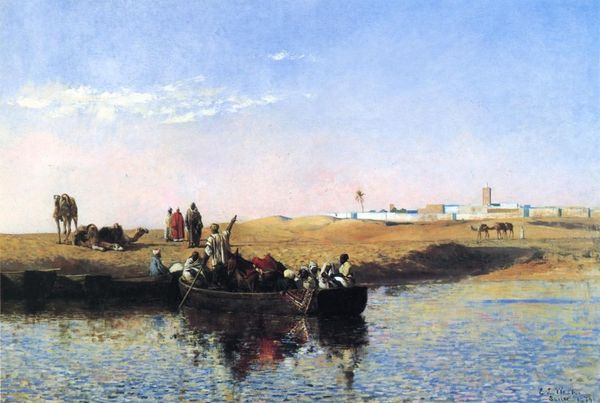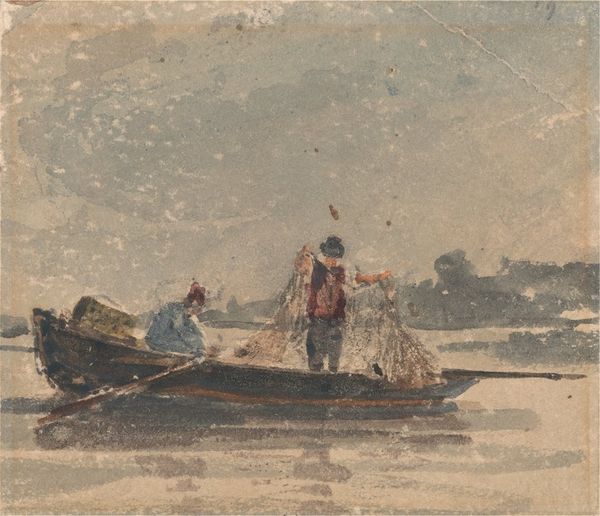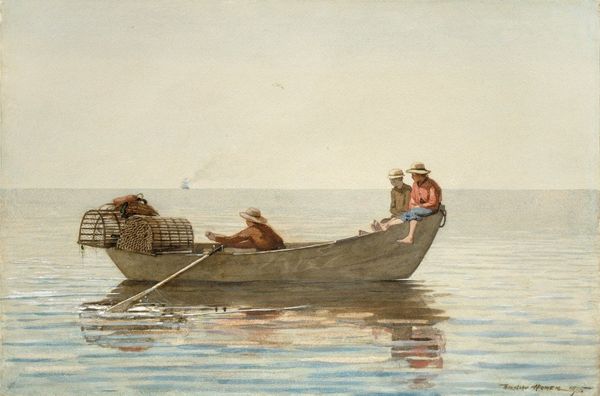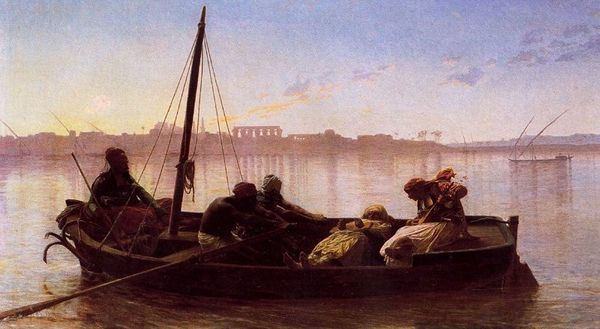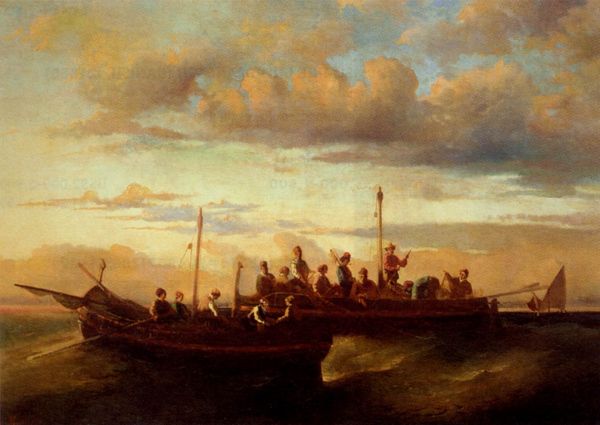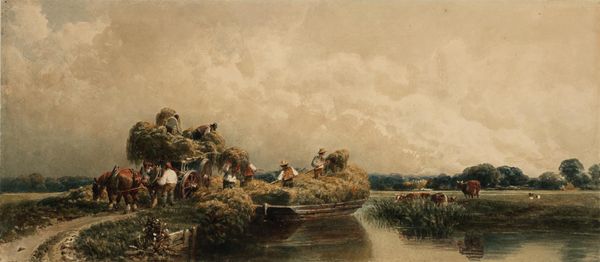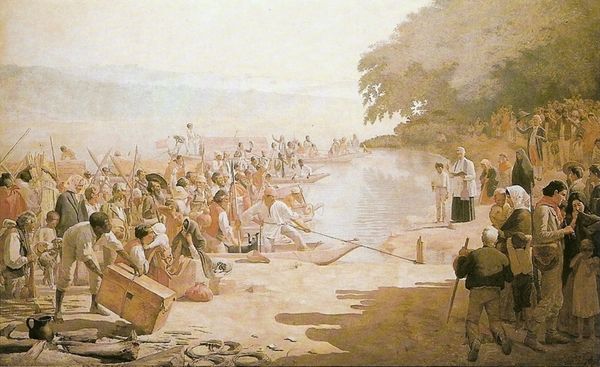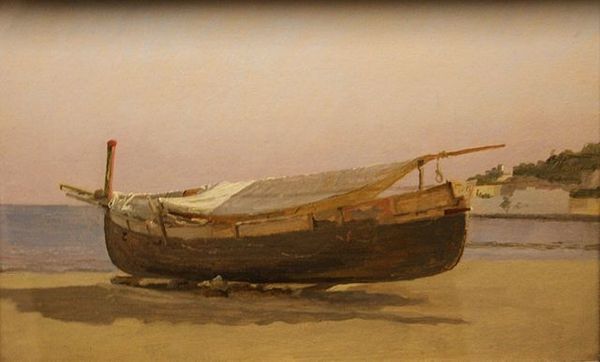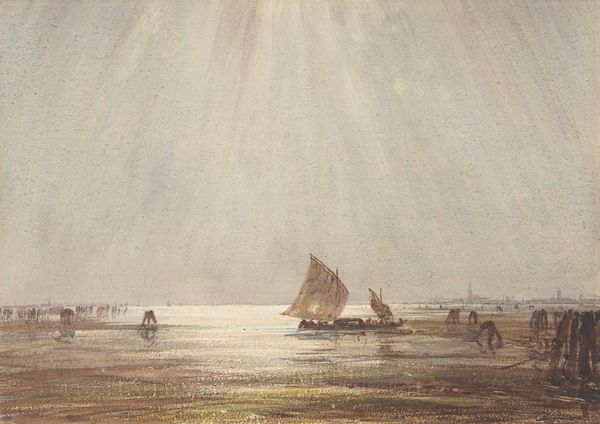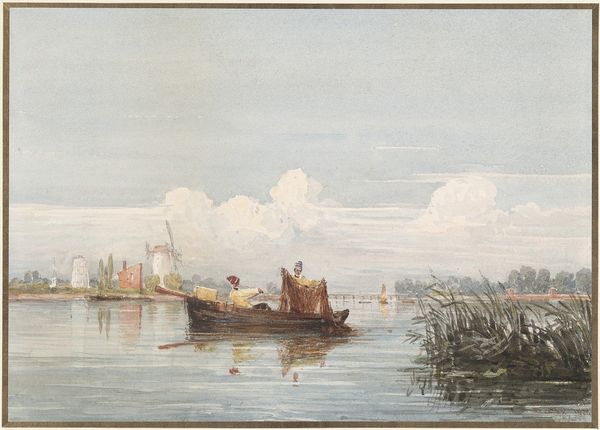
Shad Fishing at Gloucester on the Delaware River 1881
0:00
0:00
thomaseakins
Philadelphia Museum of Art, Philadelphia, PA, US
plein-air, oil-paint, impasto
#
portrait
#
boat
#
plein-air
#
oil-paint
#
landscape
#
river
#
impressionist landscape
#
oil painting
#
impasto
#
group-portraits
#
water
#
genre-painting
#
realism
Copyright: Public domain
Editor: Here we have Thomas Eakins's "Shad Fishing at Gloucester on the Delaware River," painted in 1881 using oil paint. The muted colors give it a kind of hazy, almost dreamlike quality, but it’s also quite realistic. What strikes you about this piece? Curator: What interests me is the labor being depicted and its presentation. Observe how Eakins captures this commercial fishing operation. Note the presence of both the working class, actively engaged in the labor of fishing, and the leisure class, the women in elaborate dresses seemingly observing the process. What kind of class divisions are present? Editor: It’s a stark contrast. The fishermen are literally knee-deep in the river working, while these fashionable women watch from the shore. Are you saying Eakins is highlighting the difference in their material conditions? Curator: Precisely! Look closely at the means of production. The boats, the nets, the collective labor required to haul in the shad. And how that contrasts with the material wealth signified by the clothing of those watching. Are they buying the shad that is caught? Editor: I hadn’t thought about that connection, but it’s clear. The fishermen are producing something that others will consume. And it is all literally constructed using the material and labour! It seems Eakins forces us to think about the socioeconomic underpinnings of even a seemingly simple landscape painting. Curator: Absolutely. We can’t divorce the aesthetic experience from the economic and social realities that shaped both the scene depicted and its artistic representation. He shows a system being built out of objects and processes that is visible to the naked eye if we are given the correct conceptual tools! Editor: That gives me a totally new way to look at these types of landscape scenes and consider art's relationship to material culture. Thanks for showing me that!
Comments
No comments
Be the first to comment and join the conversation on the ultimate creative platform.

